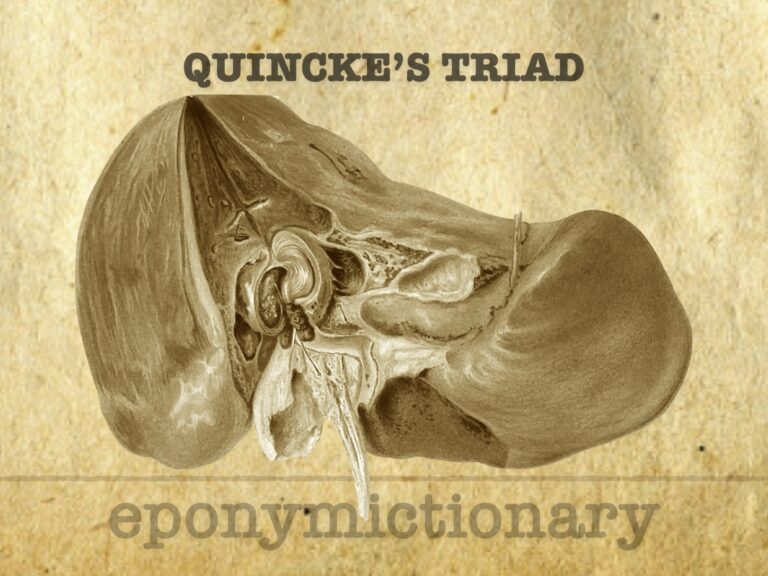
Quincke’s Triad
Quincke's Triad describes hemobilia via the triad of GI bleeding, biliary colic, and jaundice; first detailed by Heinrich Quincke in 1871, named retrospectively in 1975

Quincke's Triad describes hemobilia via the triad of GI bleeding, biliary colic, and jaundice; first detailed by Heinrich Quincke in 1871, named retrospectively in 1975

Pablo Mirizzi (1893–1964), Argentine surgeon who pioneered intraoperative cholangiography and described Mirizzi syndrome of biliary duct compression
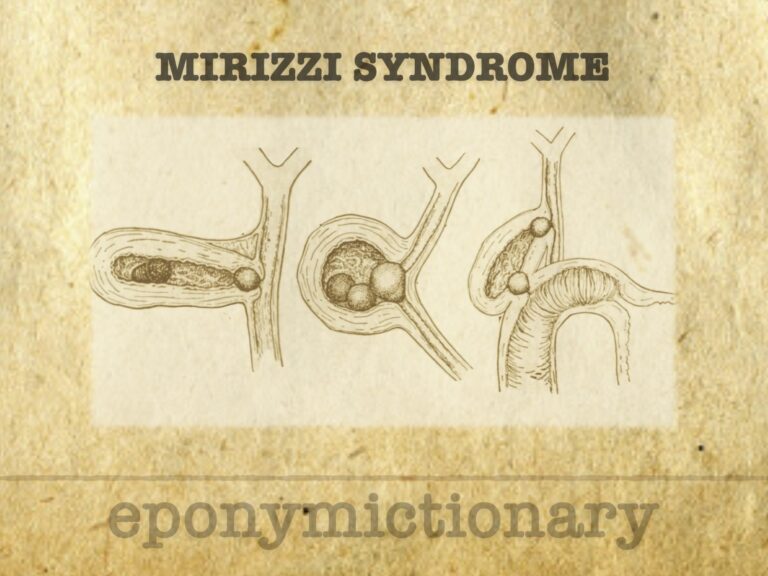
Mirizzi syndrome is a rare complication of gallstone disease involving bile duct compression or fistula formation, with evolving classifications from Mirizzi to Csendes and Beltrán

German physician Bernhard Naunyn (1839–1925), pioneer of experimental medicine, defined acidosis, advanced diabetes and gallstone research, and co-founded Naunyn–Schmiedeberg’s Archives

Hans Kehr (1862–1916), pioneer of gallbladder surgery, introduced the T-tube for bile duct drainage; eponymously linked to Kehr’s sign of splenic rupture.

Courvoisier’s sign: palpable gallbladder with painless jaundice suggests malignant obstruction, not gallstones. A key clinical diagnostic clue.
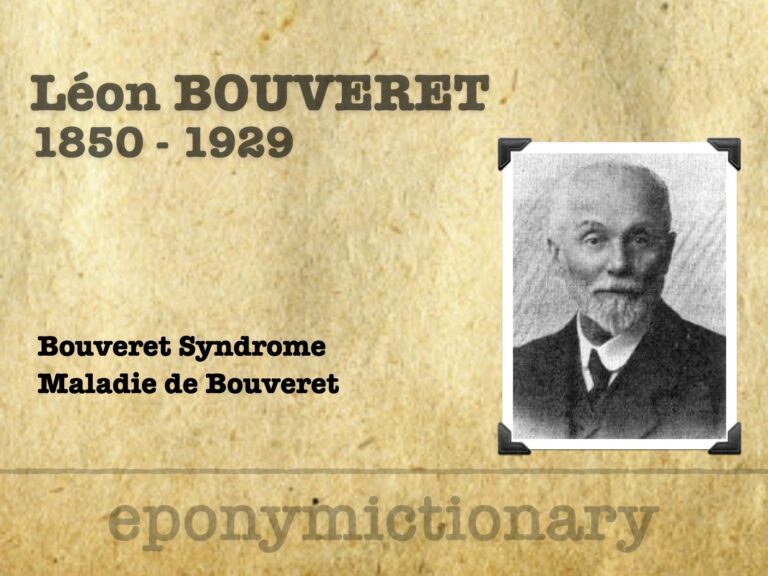
Léon Bouveret (1850-1929) was a French internal medicine physician. Eponymous terms Maladie de Bouveret (1889) and Bouveret Syndrome (1895)

Ludwig Georg Courvoisier (1843-1918) was a Swiss surgeon, academic, and naturalist best remembered for Courvoisier’s sign / law (1890)
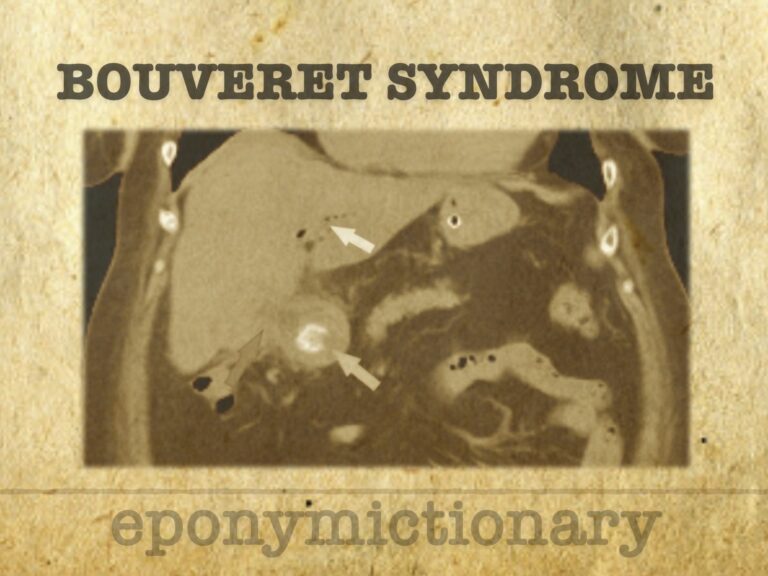
Bouveret syndrome: gastric outlet obstruction following passage of a gallstone from gallbladder to duodenum/pylorus via bilioenteric fistula
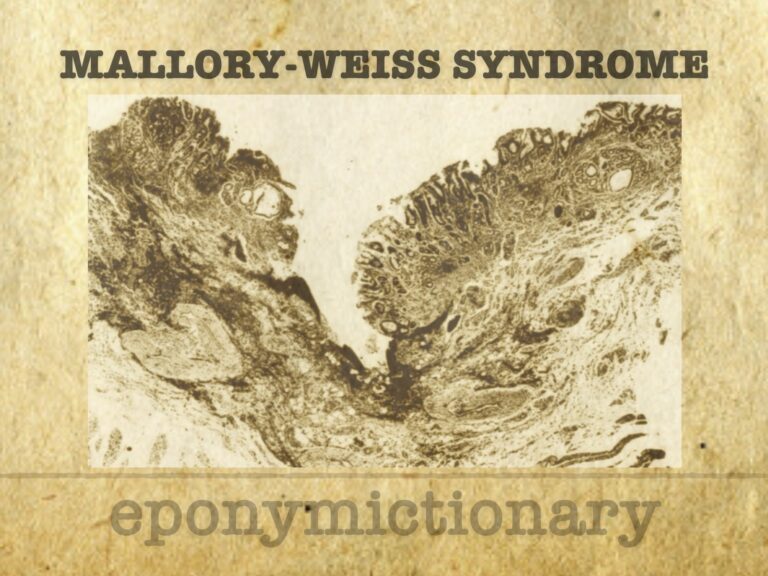
Mallory–Weiss syndrome: upper GI bleeding from gastroesophageal tears. History, key figures, first descriptions, diagnosis, and treatment.
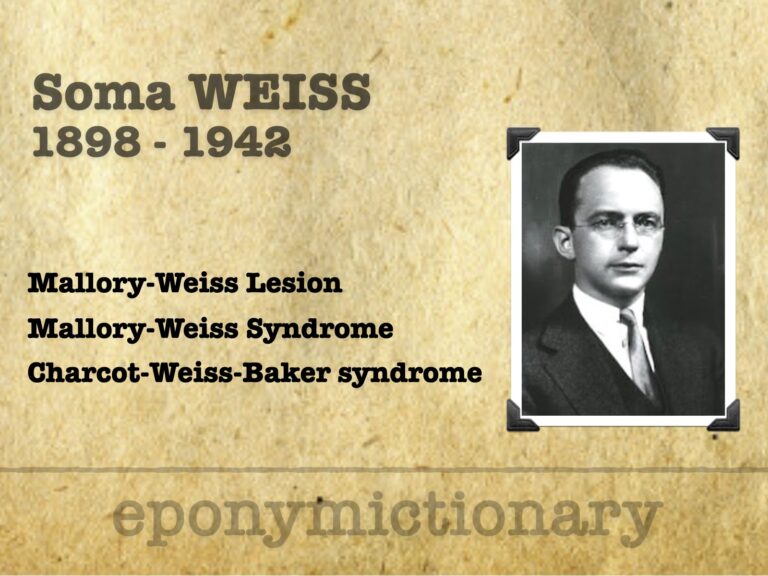
Soma Weiss (1898-1942) was a Hungarian-born American physician. Mallory-Weiss Syndrome/lesion/tear and Charcot-Weiss-Baker Syndrome.

George Kenneth Mallory (1900–1986), American pathologist, co-described Mallory–Weiss syndrome and advanced cardiac, renal, and hepatic pathology